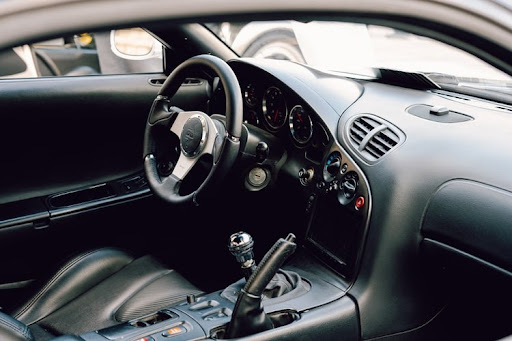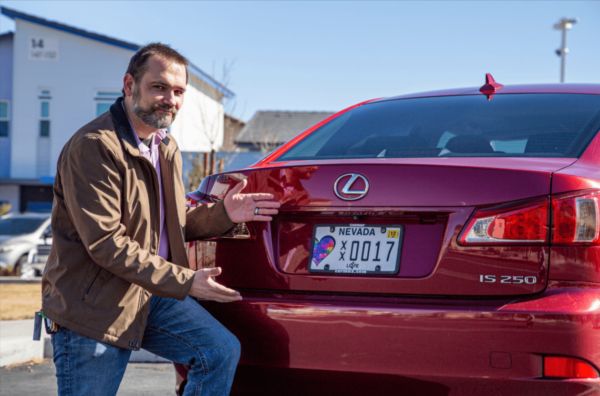The Legality of 4D and 3D Number Plates in the UK
Number plates in the UK have undergone several changes over the years, from simple pressed metal designs to reflective acrylic plates. More recently, 3D and 4D number plates have gained popularity among vehicle owners who want a more stylish and distinctive look. However, many motorists are still unclear on the legality of these plates and whether they comply with UK law. This article will explore the differences between 3D and 4D plates, the current regulations, and what drivers need to know to ensure they stay on the right side of the law.
3D number plates have characters that appear raised from the surface of the plate. These are typically created using a gel resin, giving the letters and numbers a rounded, glossy appearance. These plates have been around for several years and are commonly seen on vehicles where the owner wants to add a subtle customization.
4D number plates take the concept a step further by using laser-cut acrylic characters that are physically raised above the background. The letters and numbers on 4D plates are more defined and angular than their 3D counterparts, providing a sharper, high-contrast look. These plates are often chosen by motorists who prefer a bold and modern aesthetic for their vehicles.
Are 3D and 4D Number Plates Legal in the UK?
Yes, both 3D and 4D number plates can be legal in the UK, but they must comply with specific regulations set by the Driver and Vehicle Licensing Agency (DVLA) and meet the British Standard BS AU 145e.
In September 2021, new rules were introduced to improve the durability and readability of number plates. According to these regulations, all number plates must:
- Be made from a material that is resistant to damage and weathering.
- Display solid black characters without any pattern or two-tone effects (which means shaded or gradient 3D fonts are now illegal).
- Be reflective and include a supplier’s name and postcode at the bottom.
- Have characters that are a single, unbroken black color to ensure clarity for Automatic Number Plate Recognition (ANPR) cameras.
As long as 3D and 4D plates follow these guidelines, they are considered legal. However, any plate that uses illegal spacing, incorrect fonts, or non-compliant colors will not be road-legal and could result in fines or penalties.
Common Misconceptions About 3D and 4D Plates
“All 4D Plates Are Illegal”
One of the most common misconceptions is that all 4D plates are banned. This is false. As long as the characters are solid black, the correct font is used, and the material meets the required standard, 4D plates are perfectly legal.
“Raised Lettering Confuses ANPR Cameras”
Some drivers believe that raised lettering prevents ANPR cameras from reading number plates. However, as long as the plates use solid black characters with a legally approved font, they remain easily readable by both human eyes and ANPR technology.
“Gel Resin Plates Are Not Road-Legal”
3D gel resin plates are still legal, provided they do not use shading or color variations that could make the characters appear different under certain lighting conditions.
Where to Buy Legal 3D and 4D Plates
When purchasing 3D or 4D plates, it’s important to buy from a reputable supplier that follows DVLA guidelines. Companies like Regplates ensure that their number plates are fully compliant with UK laws, offering durable and high-quality options for vehicle owners. Buying from unverified sellers, particularly online marketplaces, can be risky, as some plates may not meet the required standards.
Always check that the supplier provides plates with:
- The correct British Standard mark (BS AU 145e).
- Legal character spacing and font.
- The supplier’s name and postcode on the plate.
Penalties for Non-Compliant Number Plates
If a vehicle is found to have illegal number plates, the driver could face several penalties, including:
- A fine of up to £1,000.
- An MOT failure if the plates are deemed non-compliant.
- The plate being confiscated by authorities.
- Potential issues with insurance claims if the vehicle is involved in an accident.
To avoid these problems, drivers should always ensure their plates adhere to the law and avoid unofficial modifications that could make their plates unreadable or misleading.
Conclusion
3D and 4D number plates have become a popular way for vehicle owners to personalize their cars while maintaining a sleek, modern look. While these plates are legal in the UK, they must comply with the strict DVLA regulations to ensure readability, durability, and compliance with ANPR technology.
When purchasing new number plates, it’s essential to buy from a trusted supplier and verify that the plates meet the required British Standard. By staying informed and following the law, drivers can enjoy the aesthetic appeal of 3D and 4D plates without risking fines or legal trouble.








